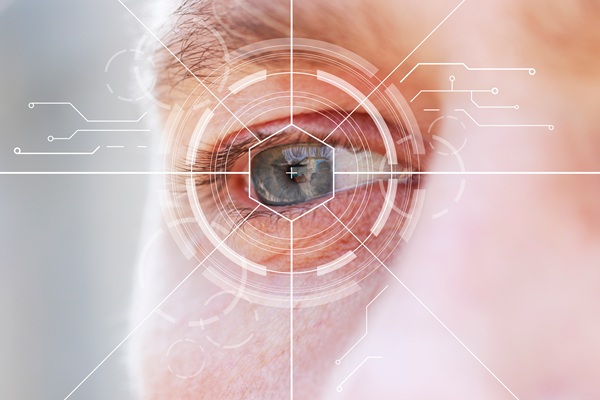Signs You May Need Cataract Treatment Soon

Cataract treatment becomes necessary when cataracts, which cloud the natural lens of the eye, begin to impair vision. Cataracts typically develop slowly over time, and many people may not notice its early signs. As the condition progresses, it can significantly impact daily activities such as reading, driving, and using digital devices. Identifying the early symptoms of cataracts and seeking timely cataract treatment can prevent further vision loss and improve quality of life.
Understanding cataracts
Cataracts occur when the protein in the eye's lens breaks down, causing the lens to become cloudy. This clouding of the lens obstructs light from passing through, resulting in blurry or dimmed vision. Cataracts can develop in one or both eyes and are typically associated with age, though they may also result from injury, certain medications, or other underlying health conditions. Note that an optometrist does not perform cataract surgery, which is the most effective treatment method. Instead, they help manage symptoms, helping patients to keep the condition from progressing for as long as possible before surgery is necessary.
Signs cataract treatment is necessary
According to Johns Hopkins Medicine, cataracts develop slowly, making it easy for patients to ignore them in their early stages. However, even if patients recognize there is an issue, it is hard to self-diagnose as the disease shares symptoms with other conditions like glaucoma and dry eye syndrome. This makes it all the more important to maintain regular checkups with an optometrist who can spot signs, regardless of the stage of the condition.
Nevertheless, if one experiences any of the following signs, it is time to consult an optometrist:
Blurry or cloudy vision
The most common signs that cataract treatment may be necessary is blurry or cloudy vision. As cataracts form, the clouding of the lens becomes increasingly noticeable, resulting in a decrease in visual clarity. Individuals may describe their vision as seeing through a foggy or frosted window. This symptom often worsens over time, making it difficult to distinguish details, even with corrective lenses such as glasses or contact lenses. Addressing these signs early offers a higher chance of restoring clear vision and preventing further deterioration.
Difficulty with night vision
Another early sign of cataracts is difficulty seeing in low-light conditions. As the cataracts develop, they can cause increased glare and halos around the lights, especially at night. This can make driving at night particularly challenging, as headlights from oncoming vehicles may create significant glare, making it difficult to see the road.
Patients with cataracts often experience more difficulty with night vision over time. If these symptoms begin to affect daily activities, such as driving at night or navigating dimly lit areas, cataract treatment may become necessary.
Sensitivity to light and glare
Increased sensitivity to light and glare is another indication that cataract treatment may be necessary sooner rather than later. As the cataracts cloud the lens, light that enters the eye may scatter, causing discomfort and visual disturbances. This can lead to difficulty looking at bright lights, such as those from the sun, fluorescent lights, or headlights at night.
People with cataracts may experience excessive discomfort when outdoors during the day, requiring sunglasses or hats to shield their eyes. They may also struggle to see clearly when exposed to artificial lighting, such as indoor lighting. If light sensitivity and glare become bothersome and hinder daily activities, cataract treatment should be considered to improve comfort and restore visual clarity.
Fading or yellowing of colors
Cataracts can also cause colors to appear faded, yellowed, or less vibrant than they usually are. The clouding of the lens filters out certain wavelengths of light, affecting how colors are perceived. This symptom can be subtle at first, but as cataracts progress, it can lead to a noticeable difference in color perception. For instance, one may notice white objects appear yellowish or that the colors of everyday objects seem dull and less distinct. This can make tasks such as choosing clothing, reading, or recognizing objects in one's normal environment more difficult.
Frequent prescription changes
A person with cataracts may experience frequent changes in their eyeglasses or contact lens prescription. As cataracts worsen, the need for stronger corrective lenses increases, but new prescriptions may not fully resolve vision problems caused by the cataract. Furthermore, if regular updates to corrective lenses no longer improve vision, the optometrist may consider referring the patient to an ophthalmologist for surgical treatment of cataracts.
Schedule an appointment
Cataracts are a common condition that affects many individuals, particularly as they age. Therefore, if you have noticed any of the symptoms above, regardless of whether you think it is a major issue, it is time to contact an optometrist for a checkup. Contact our office to determine whether cataract treatment is necessary or if an alternative care plan would be more suitable for you.
Request an appointment here: https://www.texasoptical.net or call Texas Optical at (214) 771-7333 for an appointment in our Dallas office.
Check out what others are saying about our services on Yelp: Read our Yelp reviews.
Recent Posts
Red, itchy eyes can affect your everyday comfort and reduce overall well-being. It is important to seek effective vision care from the first sign of irritation. Proper attention to symptoms, underlying causes, and healthy habits ensures stronger long-term eye health and greater day-to-day clarity. Redness and itchiness often stem from several common triggers. These include: Allergic…
New spots or shadows drifting across vision can be unsettling, and sudden changes sometimes require emergency eye care to protect long-term sight. Many floaters are harmless, but others signal serious problems with the retina or internal eye structures. Understanding when floaters are normal and when they point to a true eye emergency helps patients act…
Glaucoma treatment plays a vital role in preserving vision and protecting the optic nerve from further damage. Many patients rely on daily eye drops to manage intraocular pressure, but these medications can sometimes come with side effects. Understanding how to recognize, minimize, and communicate about these effects supports long-term success and comfort with treatment. While…
Progressive lenses offer clear vision at near, arm's length, and far distances without the visible lines found in bifocals. They provide a smooth change in power from top to bottom, which means the eyes can focus comfortably throughout the day. With the right fit and guidance from an optometrist, progressive lenses help reduce eye strain…


